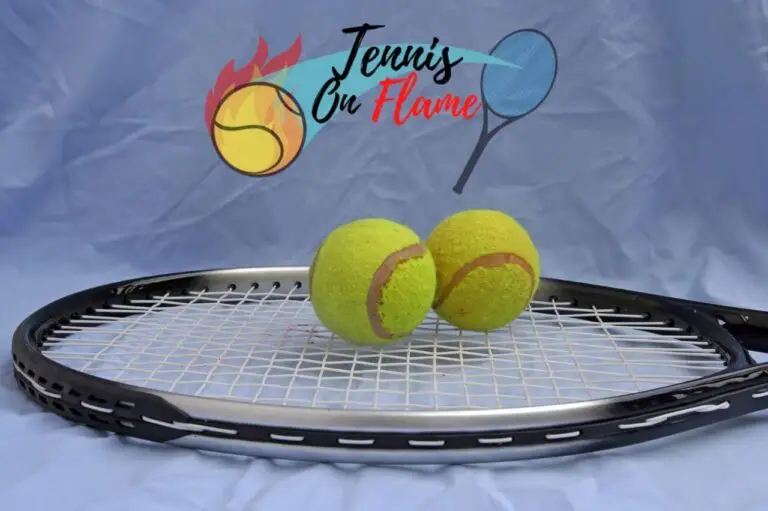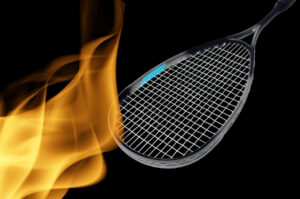As an avid tennis enthusiast, my journey in tennis has been nothing short of thrilling.
Every aspect of the game keeps me hooked, from the thunderous thump of the ball against the strings to the adrenaline rush during a tiebreaker.
Recently, I pondered a question that intrigued my curious mind and my passion for tennis – do any tennis rackets have fiberglass inside?
Join me on this comprehensive exploration as we unravel the secrets behind the materials that make our tennis rackets tick.

The Fiberglass Revelation: Unveiling the Mystery
Tennis rackets, the extension of a player’s skill and style, are crafted with various materials. The use of fiberglass in tennis rackets is not uncommon.
Fiberglass, known for its lightweight and durable properties, has found its way into the hearts of racket manufacturers and players alike. Its material promises a blend of power, control, and flexibility, making it a fascinating choice for constructing tennis rackets.
Fiberglass is often incorporated into the frame and sometimes even the racket strings, contributing to the overall performance and feel.
Now that the cat is out of the bag let’s delve deeper into the specifics of fiberglass in tennis racket construction.
Breaking Down the Composition: Where Fiberglass Meets Tennis Racket
The fusion of fiberglass with tennis racket design involves a meticulous process.
The fiberglass is usually woven into sheets and impregnated with resin to create a composite material.
This composite is then strategically integrated into different parts of the racket, enhancing specific aspects of its performance.
In the racket frame, fiberglass adds stiffness without compromising on weight.
This characteristic is precious for players seeking a balance between power and control.
The flexibility of fiberglass also plays a role in dampening vibrations, providing a more comfortable playing experience.
Advantages of Fiberglass-Infused Rackets
Lightweight Powerhouse
Fiberglass, a lightweight material, contributes to the overall weight distribution of the racket.
This results in a racket that is easy to maneuver, enabling players to generate powerful shots with minimal effort.
Enhanced Durability
The durability of fiberglass is a significant boon for tennis rackets.
It withstands the wear and tear of constant play, ensuring that your racket remains a reliable companion on the court for an extended period.
Choosing the Right Fiberglass-Infused Racket: A Player’s Guide
Now that we’ve uncovered the magic behind fiberglass in tennis rackets let’s explore how to choose the right one for your game.
Player Skill Level and Style
Consider your skill level and playing style.
Fiberglass rackets are versatile, but some may cater better to beginners or advanced players.
Assess your strengths and weaknesses to find the perfect match.
Racket Head Size
Fiberglass rackets come in various head sizes. Larger heads offer more power, while smaller heads provide greater control.
Find the balance that aligns with your playing preferences.
My Personal Experience: A Fiberglass Journey
Having recently switched to a fiberglass-infused racket, the experience has been transformative.
The lightweight nature of the racket allows me to cover the court effortlessly, while the added power has taken my groundstrokes to the next level.
The comfort and control it provides have made every match a joyous adventure.
Caring for Your Fiberglass Beauty: Maintenance Tips
Owning a fiberglass racket comes with the responsibility of proper care.
Follow these tips to ensure your racket remains in peak condition:
Regular Cleaning
Wipe down your racket after each game to remove dirt and sweat.
This simple practice goes a long way in preserving the integrity of the fiberglass.
String Tension Maintenance
Monitor the tension of your racket strings regularly.
Fiberglass rackets respond well to specific string tensions, and keeping them within the recommended range ensures optimal performance.
Fiberglass in the Future of Tennis: What Lies Ahead
As technology and materials evolve, fiberglass will likely remain a prominent player in tennis racket construction.
The blend of lightweight strength and durability it offers aligns seamlessly with the demands of modern tennis players.
With ongoing research and innovations, we can anticipate even more refined and advanced uses of fiberglass in future racket designs.
| Advantage | Description |
|---|---|
| Lightweight Powerhouse | Fiberglass contributes to easy maneuverability and powerful shots with minimal effort. |
| Enhanced Durability | Fiberglass withstands constant play, ensuring the racket remains reliable over time. |
| Player Skill Level and Style | Consider your skills and style when choosing a fiberglass racket. |
| Racket Head Size | Balance power and control by selecting the appropriate head size. |
| Regular Cleaning | Wipe down the racket after each game to preserve the integrity of the fiberglass. |
| String Tension Maintenance | Monitor and maintain the recommended string tension for optimal performance. |
Conclusion: Playing the Future with Fiberglass
In conclusion, incorporating fiberglass in tennis rackets is a reality and a game-changer.
The lightweight power, enhanced durability, and versatile applications make fiberglass-infused rackets a force to be reckoned with on the court.
As you embark on your tennis journey or consider upgrading your equipment, don’t overlook the magic that fiberglass can bring to your game.
So, next time you step onto the court, armed with your trusty fiberglass racket, remember – you’re not just playing a game; you’re wielding a piece of technological marvel that can elevate your tennis experience to new heights.








